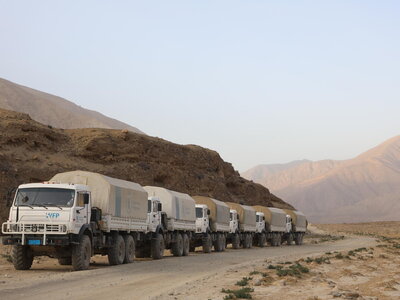Afghanistan
- 14.8 million
- people have acute food insecurity
- 1 in 3
- Afghans do not know where their next meal will come from
- 43.4 million
- population
The Afghan people continue to grapple with the consequences of four decades of conflict, with entrenched poverty further exacerbated by an economic crisis, frequent environmental disasters and the impact of a worsening climate crisis, and gender inequality.
More than a third of the Afghan population are going hungry, including more than 3 million people facing emergency levels of food insecurity.
Since 2021, the Taliban has imposed numerous restrictions on women and girls, which is likely to exacerbate the country's already severe economic and humanitarian crisis.
Afghanistan is ranked as the sixth country most vulnerable to the climate crisis, grappling with flash floods and prolonged droughts.
In 2024 alone, every province faced a climate disaster, resulting in the destruction of 20,000 homes and the flooding of 74,000 hectares of agricultural land – an area larger than 100,000 football fields.
The World Food Programme works with partners to reach the most vulnerable communities across the country. However, a funding crisis is severely restricting our ability to meet those in most need.
What the World Food Programme is doing in Afghanistan
-
Emergency response
-
In the context of conflict and frequent disasters, WFP provides unconditional, fortified and nutritionally balanced food assistance to vulnerable groups including people displaced by conflict, those affected by disasters, refugees, returnees from neighbouring countries, and people affected by seasonal food insecurity. However, this support is severely hampered by ongoing funding shortages.
-
Resilience building
-
WFP works together with communities to strengthen their ability to reduce the risk of disasters and adapt to climate change, while also creating employment opportunities both in urban and rural areas. This includes constructing or rehabilitating roads, canals, flood protection walls and reforestation, as well as vocational training.
-
Nutrition
-
WFP’s support includes providing specialized nutritious foods to acutely malnourished pregnant and breastfeeding women and girls, to treat malnutrition.
-
Food systems
-
WFP is working with the Government and commercial partners to provide people throughout the country with access to nutritious food at affordable prices by supporting smallholder farmers, building local milling and fortification capacity, and strengthening value chains and food safety measures.
-
Advocacy for zero hunger
-
WFP supports government officials and partners in establishing zero hunger as a development priority and enhancing the coherence of their Zero Hunger policy through capacity strengthening, advocacy, public awareness and research, including the creation of Food Security and Nutrition committees at the province level to promote local ownership.
-
Capacity strengthening
-
To enhance the ability of the Government and the broader humanitarian and development community to respond to affected populations’ needs, WFP assists with the provision of assistance in beneficiary management, supply chain, information and communication technology, and facilities and information management.
Afghanistan news releases
Go to pageFind out more about the state of food security in Afghanistan
Visit the food security analysis pageOperations in Afghanistan
Contacts
Office
---
Kabul
Afghanistan






